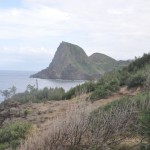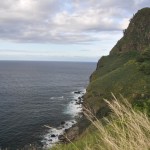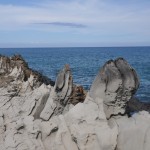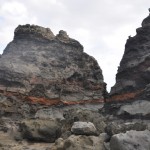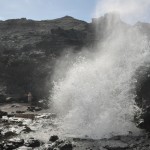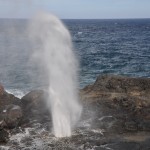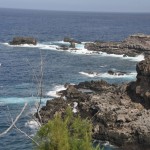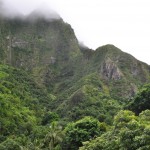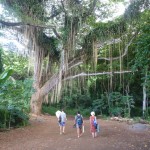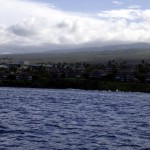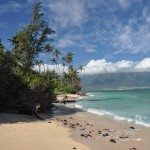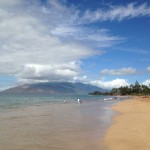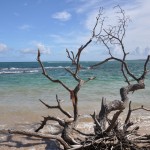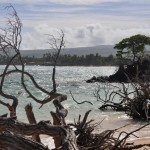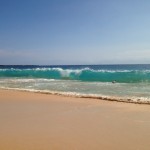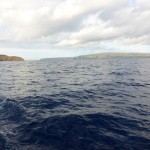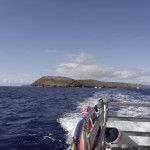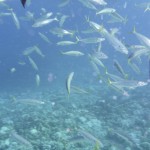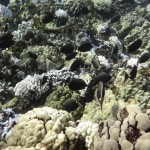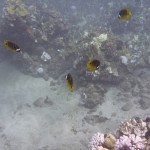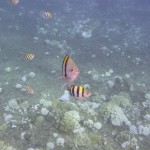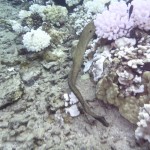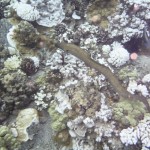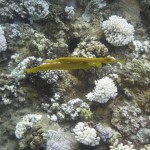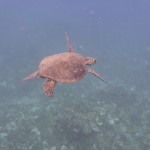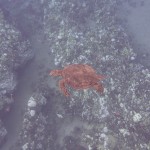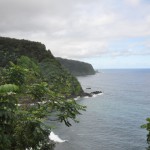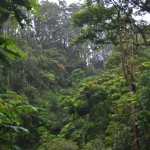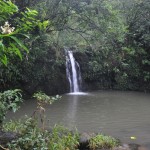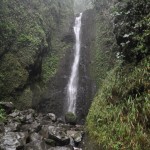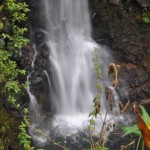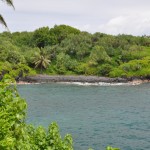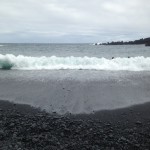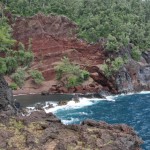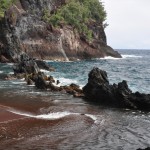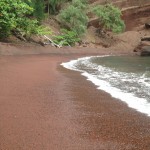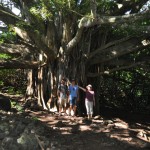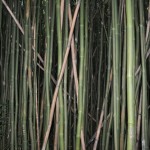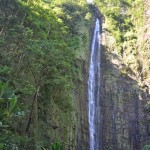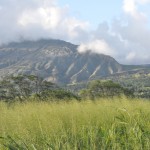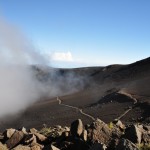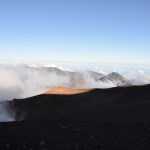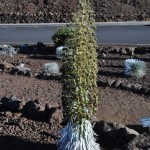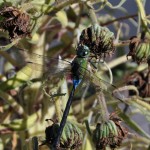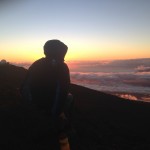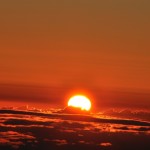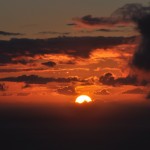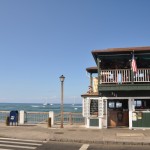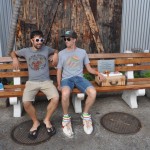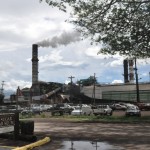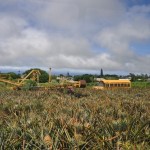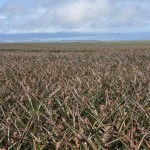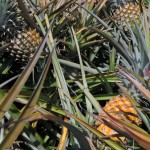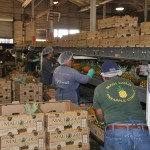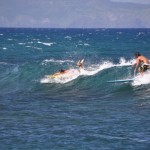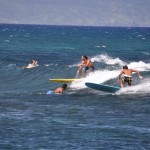Given that Hawaii is so far away from Europe and that after his incredible performance at the Ironman Felix surely deserved some agreeable days of rest and vacation, we decided to take the opportunity and hop the ocean to Maui. This volcano island is much older than Big Island and it gets clear directly during the first impressions: it has less lava fields and almost all are now overgrown by jungle or rainforest. The natural beauties and the high diversity of various landscapes on such little place are even more stunning, as well as the ever changing weather conditions…
We were soon to realize this while driving the West Maui Circuit on our first trip. We followed the mountain road along the coastline and stopped at a few hotspots like Dragon Teeth’s awkward formations, powerful Nakalele Blowhole, marvelous Olivine Pools and Iao Valley State Park. West Maui’s beaches are at least equally exceptional, they offer nice snorkel areas and you have good chances of encounters with big turtles or dolphins. Among others, the beaches Kahekili, Napili-Kapalua, DT Fleming Beach Park and Honolua Bay are real gems. Besides, you also have great surfing spots especially for beginners there, where although being first-timers we eventually managed to ride onto a couple of waves without always falling from the board! Since it was quite a lot of fun, maybe we should reconsider our main sports activity?
Notwithstanding, I would still say the perfect beaches are rather to be found on South Maui, all carrying beautiful names such as Kihei, Wailea or Makena. Without any rocks but everlasting fine sand, it soon feels like an idyllic paradise… so watch out for occasional giant waves that literally knock you down when boogie boarding! A couple of miles offshore lies partially submerged Molokini volcanic crater, a seabird and marine sanctuary. Thanks to Boss Frog’s Molokini cruise we spent hours exploring thousands of multicolored creatures living in the coral reef – perhaps the most memorable snorkel adventure of our whole holiday.
Of course we also did the other top-rated activities on Maui, and I truly acknowledge these must-see sites deserve their TripAdvisor rating. I do not exactly remember how often we stopped on the legendary Road to Hana, but each one of the countless halts surpasses the other. Basically you drive through a lush (and rainy) rainforest full of waterfalls, whereas almost each one of the falls would be worth further exploration. Some of them you can see directly from the road (with flows both above and below yourself), for the other waterfalls a short but slippery walk over mud, stones and streams is usually necessary – in return you’ll be highly rewarded with the most beautiful views which you’ll often have all by yourself. When you finally approach the laid-back, tranquil town of Hana you soon realize how secluded it actually is. Despite the difficult access I would definitely recommend the journey because Hana has an exceptional, pristine red sand beach where even an American-style picnic tastes like a French gourmet five-star meal. And (admittedly although being exhausting) on the long way back via south-east Maui you should not at all miss the Pipiwai Trail. You will need approximately two hours for the round trip, passing by huge banyan trees and crossing a magical bamboo forest to reach the (guess what? oh, a waterfall) more than 120 meters deep Waimoku Falls at the end of the hike.
It is not that we never became saturated but Maui just has again another totally distinct landscape to offer, thus we simply had to seize the chance and experienced the beautiful sunset on top of the Heleakala Crater. Located 3000 meters above sea level, you find yourself in such a surreal and hostile environment that is hard to imagine how plants and animal creatures still decided to choose exactly the top of this sleeping giant to live! It is extremely windy and freezingly cold up there, hence thinking of the vacationers improving their sun tan next to the hotel pools below feels yet more kind of awkward…
Having chosen to stay in a vacation house near Lahaina turned out to be a good idea. The former capital of Hawaii Kingdom (before Honolulu became the number-one city) used to be an important center of the whaling industry and also a wealthy plantation town. Thanks to its heritage Lahaina has not lost too much of its charm until today. Being a little bit sleepy, it always felt most agreeable when we came here for a visit: we walked down famous Front Street with its old courtyards and wooden houses, we strolled along historic whalers pubs, restaurants or craft shops and we relaxed under the shade of the central park’s banyan tree.
From the beginning of the 20th century cane sugar used to be the major economic sector on Maui (nowadays tourism obviously has taken the lead by far). Of the former dozens of sugar mills now only one very old mill is yet existent. It processes 200000 tons of cane sugar per year from 36000 acres of cane plantations. Between 1850-1930 many immigrants (e.g. from Japan, South-East Asia or Portugal) came as labor force to work under really harsh conditions on the fields or in the plants. Today they are essentially the reason for Hawaii’s multicultural society and diverse ethnicity, from which the common language Hawaiian Pidgin emerged as interesting outcome.
Another sector of Maui’s agriculture is the pineapple cultivation – probably similarly tough for the workers on the fields, but much more tasty for visitors ![]() The Maui-Gold® is grown across 1350 acres on the slopes of Haleakala, which provides perfect growing conditions: warm sunny days, cool nights, fresh water and rich volcanic soil yield the pineapple’s well known extra sweet flavor and low acidity. We had the pleasure to take the Maui Gold Pineapple Tour where we saw the plantations and learned many facts about the fruit and its whole related process. With this valuable knowledge we are ready to escape our consumption and growth-oriented society and start a new life as pineapple farmer
The Maui-Gold® is grown across 1350 acres on the slopes of Haleakala, which provides perfect growing conditions: warm sunny days, cool nights, fresh water and rich volcanic soil yield the pineapple’s well known extra sweet flavor and low acidity. We had the pleasure to take the Maui Gold Pineapple Tour where we saw the plantations and learned many facts about the fruit and its whole related process. With this valuable knowledge we are ready to escape our consumption and growth-oriented society and start a new life as pineapple farmer ![]()
Before finishing I’d like to mention some more general remarks that came to my mind every now and then: Maui is much more a tourist destination than Big Island, countless luxurious resorts and numerous golf courses are the first witnesses. Yet despite the easily accessible sites and well developed infrastructure I was deeply surprised that the great majority of the whole nature still appears to be mostly untouched and sound – the abundance of (underwater) wildlife further seems to testify that human impact fortunately has not brought as many damages as one could expect… oh, and a warm thank you goes to Hawaii Revealed, the best guidebook ever which helped us having such an unforgettable time at the “State of Aloha”!
